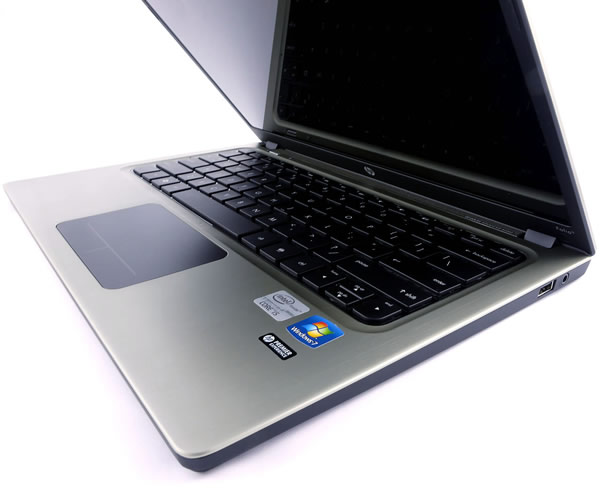Announced remaining year as an attempt to bolster notebook income amidst tablet fever, Intel's ultrabook initiative is properly underway with no much less than a dozen machines vying to be your new accomplice -- a few extra successfully than others. Vendors together with LG have unveiled rather ready ultrathins that rival Apple's MacBook Air in phrases of raw specs, but in addition they fail to fulfill one of Intel's guiding tenets by using exceeding the sub-$1,000 fee point.
There are most effective such a lot of humans inclined to spend $1,300+ on a finger-thick gadget, and a lot of them are already dependable Apple customers. The fact is, the average patron wants to believe they're buying a premium product, but they don't always need to pay premium charges. It's a hard nut to crack and maximum PC makers have failed in terms of ultrathin notebooks, whether or not by charging an excessive amount of or cutting too many corners.

LG's $1,500 X-Note Z330 is exceptionally skinny (0.58in/14.7mm) and light (2.67lb/1.21kg), but its internals are equal to ultrabooks which are 50% inexpensive or greater. Conversely, Acer's Aspire S3 stormed out of the gates final October with an reachable sub-$1,000 rate, however it was criticized for having a reasonably-priced plastic chassis, bad audio quality and viewing angles, a stiff keyboard, a brief battery existence and tons of bloatware in addition.
Striking a stability among each extremes, HP's Folio thirteen kicks off at an appealing $900 while packing the identical center componentry you'll discover in even the priciest of ultrabooks. The machine has been available for more than one months so our review isn't always in particular well timed, however after buying a unit a few weeks ago we concept it deserved attention thinking about what number of device makers are becoming the method incorrect, regardless of Intel's steering.
  | HP Folio thirteen-1020us - $900
|
Visually, the Folio 13 is reminiscent of HP's Envy and Elitebook traces, which also to mention it's reminiscent of Apple's MacBook Pros. HP has achieved an admirable job using a minimalist expert appearance on its top rate notebooks. The Folio 13 has brushed aluminum on its top cowl and around its keyboard/touchpad, at the same time as the bottom has a soft, rubbery coating. Both surfaces do an impeccable task minimizing fingerprints.
The glossy show will necessarily attract hand grease, however there may be sufficient non-smooth space across the bezel to open and close the system with out making common contact. The sleek display is likewise less than acceptable for use in brilliant environments. I can see a partial reflection whilst viewing a dark photo in my poorly lit apartment. This is compounded through the truth that the Folio's display is not specially bright at its maximum setting.

While I'm on the difficulty, the 1366x768 TN panel leaves loads to be preferred in the way of viewing angles and contrast, especially as compared to the thirteen.three-inch MacBook Air's 1440x900 panel. I locate myself regularly adjusting the show to minimize the washed look and glare. To be honest, you can say the identical about an unfortunate number of $1,000+ notebooks, and the Folio thirteen's $900 MSRP enables melt the blow.
The Folio's keyboard feels better than average for an ultraportable. There is little to no flex while typing and the keys are properly sized and spaced. The keys are backlit with white LEDs with one brightness putting (on or off). And while the backlit keys are a pleasant contact, the smooth show can detract from the revel in as you catch glimpses of the keyboard's mirrored image (the display is tilted down to exaggerate this impact below).

The unmarried-piece touchpad sits flush with the aluminum deck. It appears splendid and it works properly enough, though it isn't perfect. The surface requires common cleaning as it loses its slick experience after little use, at the same time as the mouse click on buttons are stiff and vague (clicking toward the lowest corners does not register from time to time). On the bright side, multitouch gestures together with two-fingered scrolling and pinch zoom are reachable.

As with its other externals, the Folio's Dolby Advanced Audio sound bar blends into the layout properly. It's positioned among the display hinges, so that you'll by no means ought to fear approximately accidentally protecting a speaker. Quality-wise, the audio is flat, but it is also very loud and clean, which is probably suitable for a enterprise-oriented ultrabook.
As with all ultrabooks, connectivity is reasonably confined but the Folio offers an SD card reader that is drastically absent from a lot of its competition. The card slot is at the left alongside a USB 3.0 port, an HDMI 1.4 port, and a gigabit Ethernet jack, even as the proper is in moderation populated with a single USB 2.zero port as well as an audio-out/microphone mixture jack. Naturally, 802.11b/g/n Wi-Fi is gift, as is Bluetooth 4.0.
0 Response to "HP Folio 13 Ultrabook Review"
Post a Comment